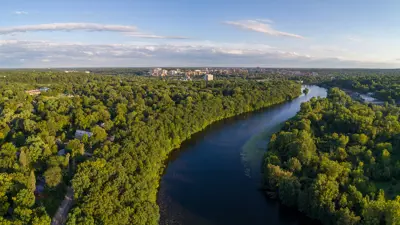Ambystoma texanum
The Small-Mouthed Salamander is a State Endangered species.
Natural History
This species is fairly tolerant of humans, living even in some farm and suburban areas. They most like living in lowland, floodplain woods, and forest edges. Shallow bodies of water are required for breeding, especially vernal ponds. They will also use run-off ponds, floodings, river backwaters, and ditches. Small-mouthed Salamanders like to remain hidden under rotting logs, rocks, and leaf litter. Like other ambystomids, they posses a lot of granular glands on upper surface of tail. Secretions are likely toxic.
Reproduction and Growth
Like Blue-spotted Salamanders, they often migrate to their breeding ponds very early in the year. They remain close to breeding sites to reduce length of migration. Females produce between 300-700 eggs laid in small, loose masses of 3-30 eggs each, typically attached to sticks, leaves, or plant stems.
Hatching occurs in 3-8 weeks depending on how hot or cold the water is. The larva transforms in 2-3 months. Sexually maturity is reached in the second year after transformation.
Conservation
Due to wide habitat tolerance, there can be a lot in some areas. Even so, they are endangered in Michigan, likely because we are at the northern edge of their range. Historic accounts list this species as being present within the City.
Habitat Type
- Ephemeral wetlands.
- Permanent wetlands.
- Forests.
- Grasslands and savannas.




 734.794.6627
734.794.6627

